Performance Post: Training Throwing Athletes Overhead Part 2
Performance Post: Training Throwing Athletes Overhead Part 2
Last week I introduced the topic of the shoulder and the throwing athlete and provided an oversimplified anatomy lesson on the shoulder joint itself. I also
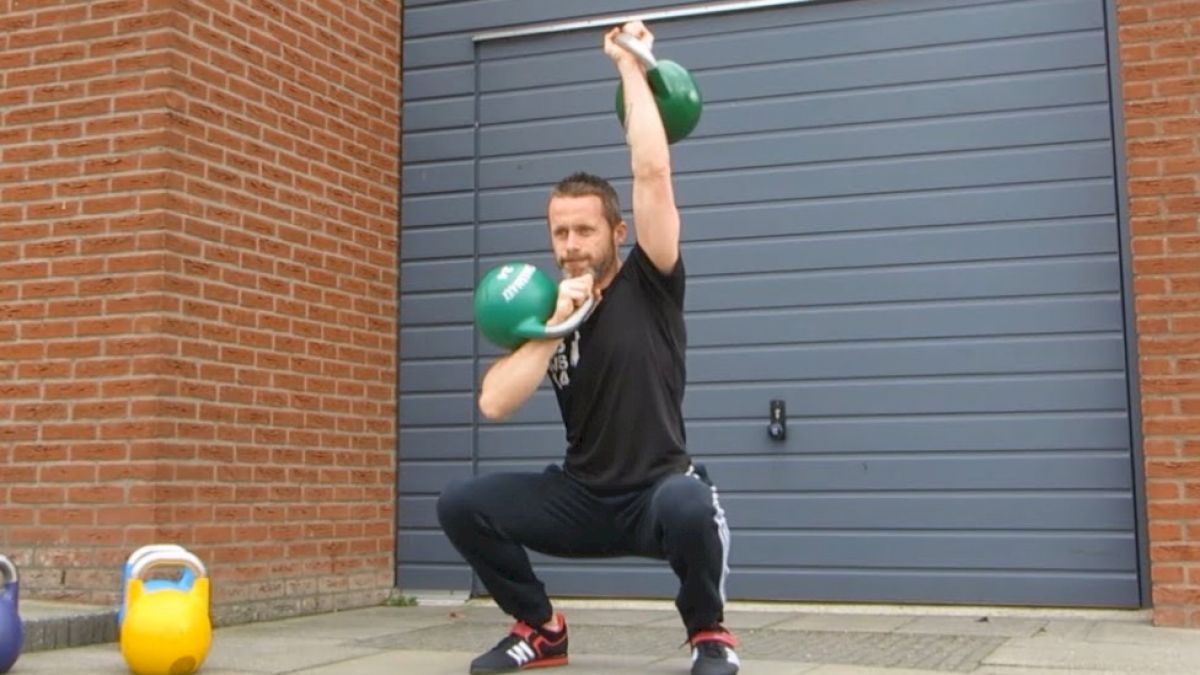
Last week I introduced the topic of the shoulder and the throwing athlete and provided an oversimplified anatomy lesson on the shoulder joint itself. I also addressed the conventional wisdom that exists with training the shoulder and the errors inherent in conventional shoulder flexibility and strengthening training protocols.
This week I want coaches, parents, and players to understand my philosophy on why I believe throwing athletes lifting overhead is safe, even necessary, for the health and function of the shoulder. I also want to be very clear that I have met excellent strength and conditioning coaches who share the opposite opinion of mine when it comes to lifting throwing athletes overhead.
As part of my master’s project, I did a research paper on the history of the overhead press and its application for sports performance. Without going into a lengthy historical recount of the lift, I’ll simply inform you that until 1972, the overhead press, not the bench press, was the quintessential test of upper body strength and was a common lift in international competitions. Due largely in part to the inconsistency of judging the lift, the overhead press was removed from competition and replaced with an easier lift to judge — the bench press.
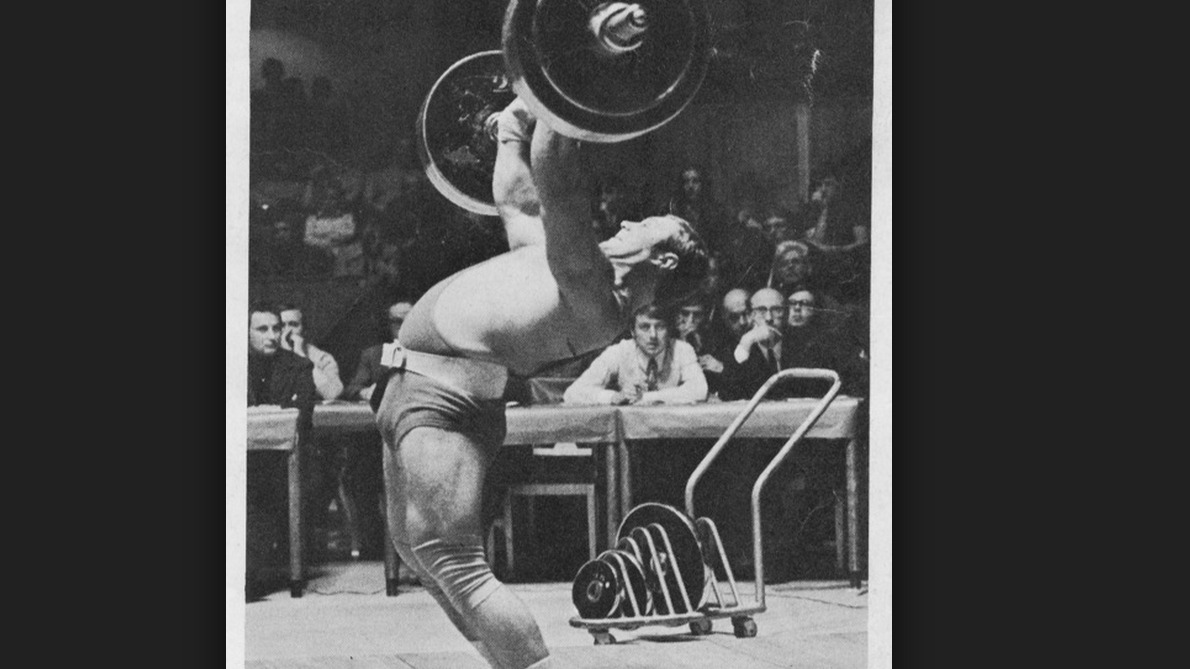

An example of the excessive (and dangerous!) back bend used by lifters that made judging the overhead press in competition inconsistent (Left)
An example of a proper, full range of motion overhead press. Notice the extensive musculature around the shoulder involved in the lift (Right)
Let it be noted that while the overhead press was a contested lift, shoulder injuries among the sport’s athletes were rare. Only after its removal and the introduction of the bench press did shoulder injuries increase dramatically and here’s why.
The overhead press allows for a natural, full-range of motion of the shoulder blades, while the bench press prohibits the shoulder blades from moving in a normal fashion because the shoulder blades are essentially pinned against the bench.
Good scapular mobility (movement of the shoulder blades) is essential for the health of the shoulder joint and is necessary to do the overhead press correctly. The major concern of coaches with overhead movements is impingement of the rotator cuff muscles and tendons, and if an athlete goes overhead with poor form or mobility, impingement will likely happen. In order to go overhead correctly and safely, the upper trapezius must engage to elevate the shoulder blades up and effectively shift the collarbone, allowing the upper arm to clear the collarbone and avoid impingement.
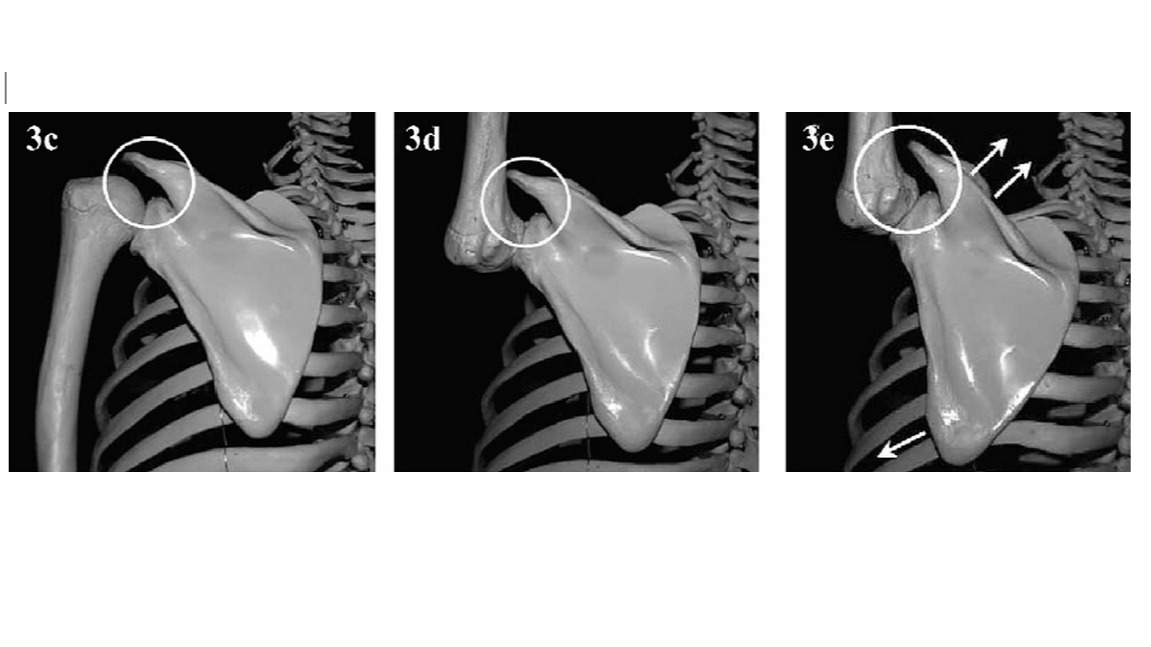
3c: The normal, resting position of the shoulder, collarbone, and upper arm
3d: Impingement caused by improper overhead movement
3e: Healthy movement of the shoulder blade with overhead movement
Aside from allowing proper movement of the shoulder blade, the overhead press also balances the workload on the shoulder, loading both the front and back portions of the shoulder muscles. The bench press, on the other hand, works only the chest and front of the shoulder, essentially ignoring the very important back portion of the shoulder. Additionally, when done correctly, the press trains other key muscles involved in throwing and activates the core and posterior chain while protecting the rotator cuff muscles.
I never hesitate to do any kind of overhead movement, be it an overhead press, overhead carry, pullup, or Olympic lift with any of my throwing athletes under the two conditions discussed above: they have good form and they have the necessary mobility to go overhead. I cannot stress the importance of form with overhead lifts and mobility of the shoulder blades when training throwing athletes.
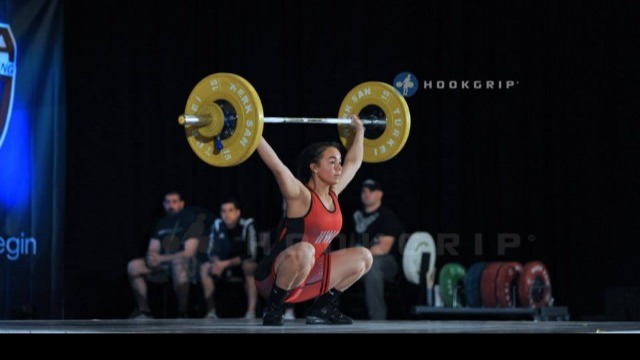
Softball player and Olympic lifter Dakota Christie has the necessary
mobility to go overhead safely and it has paid dividends with her
throwing speed
With all the care that must be given to training throwing athletes overhead, it may seem like the risk is greater than the reward, but I disagree for two reasons.
The mobility requisite for overhead lifting is something that should be maintained by throwing athletes at all times; it is crucial not only for lifting overhead but — more importantly — for playing softball itself. Throwing with an immobile, stuck shoulder will wreak havoc on the joint and lead to injury of the muscles, ligaments, and tendons of the rotator cuff. The shoulder blades needs mobility while throwing a ball just like they need mobility lifting a bar or kettlebell overhead.

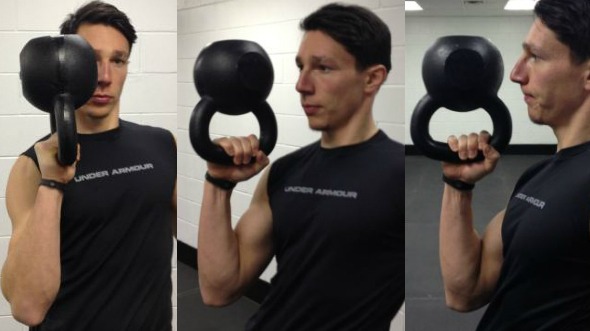
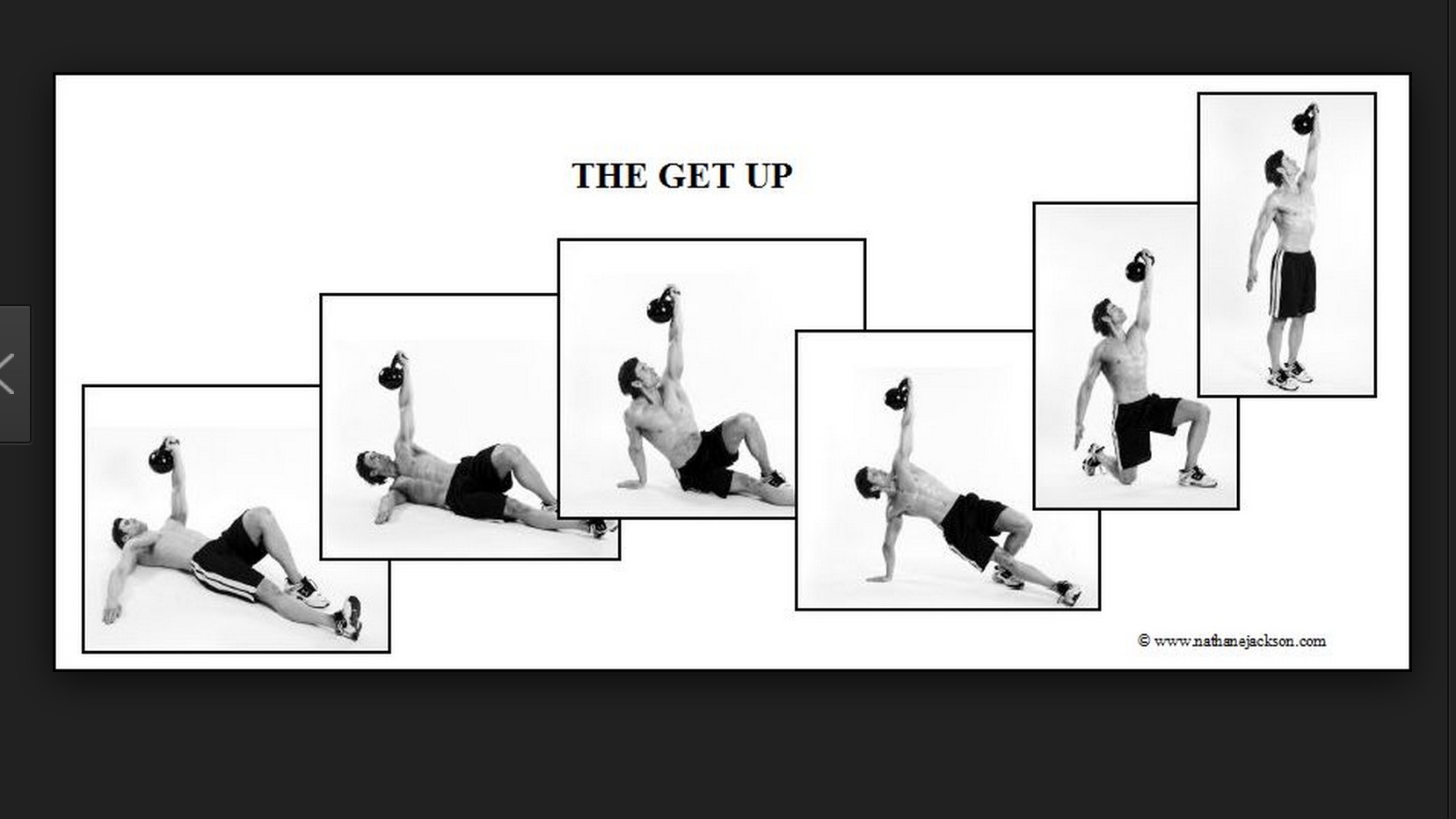
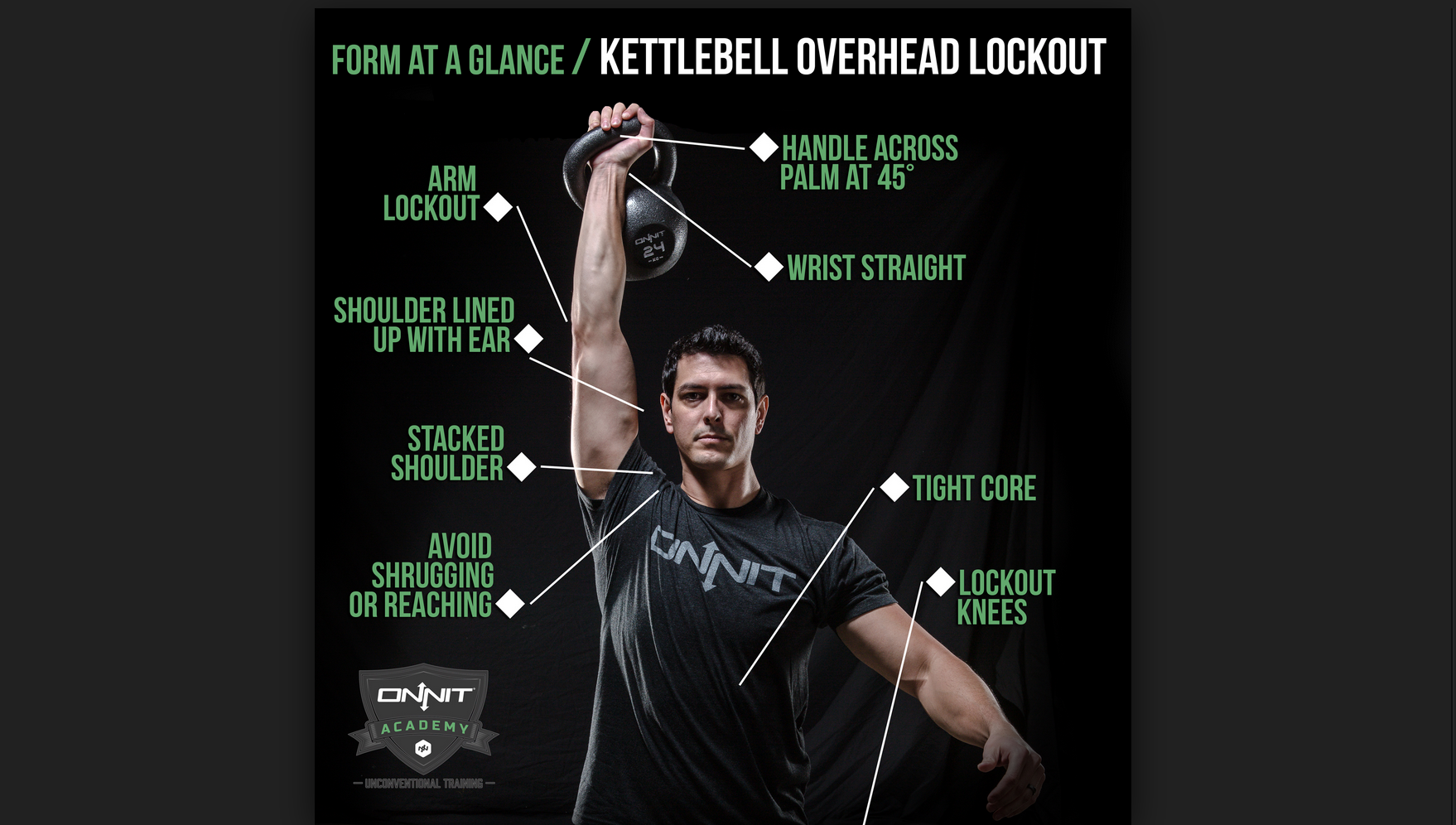
Kettlebells are excellent for overhead work because the offset center of mass helps put athletes into a sound
biomechanical position overhead. Exercises from top left clockwise are the windmill, the bottoms up carry, the
Turkish Get Up (lunge variation), and the overhead press/carry.
Also, as I explained in last week’s article, muscles other than those in the shoulder are involved in throwing and should be trained in conjunction with the muscles of the shoulder when training to increase throwing performance. Overhead lifts, overhead carries, and the Olympic lifts all work the throwing muscles in conjunction with each other while also stabilizing important muscles of the shoulder.
It is my opinion from research and experience that no banded rotator cuff exercise or stretch can strengthen, stabilize, and mobilize the throwing muscles like overhead lifts can, particularly when done with a kettlebell. The kettlebell lends itself well to overhead work because the offset center of mass puts athletes in a sound biomechanical position overhead, more so than the barbell or tradition dumbbell.
In next week’s article, I’ll explain some reasons for unhealthy shoulders and look at ways to increase mobility in the shoulder joint. Until then, happy training!
This week I want coaches, parents, and players to understand my philosophy on why I believe throwing athletes lifting overhead is safe, even necessary, for the health and function of the shoulder. I also want to be very clear that I have met excellent strength and conditioning coaches who share the opposite opinion of mine when it comes to lifting throwing athletes overhead.
As part of my master’s project, I did a research paper on the history of the overhead press and its application for sports performance. Without going into a lengthy historical recount of the lift, I’ll simply inform you that until 1972, the overhead press, not the bench press, was the quintessential test of upper body strength and was a common lift in international competitions. Due largely in part to the inconsistency of judging the lift, the overhead press was removed from competition and replaced with an easier lift to judge — the bench press.


An example of the excessive (and dangerous!) back bend used by lifters that made judging the overhead press in competition inconsistent (Left)
An example of a proper, full range of motion overhead press. Notice the extensive musculature around the shoulder involved in the lift (Right)
Let it be noted that while the overhead press was a contested lift, shoulder injuries among the sport’s athletes were rare. Only after its removal and the introduction of the bench press did shoulder injuries increase dramatically and here’s why.
The overhead press allows for a natural, full-range of motion of the shoulder blades, while the bench press prohibits the shoulder blades from moving in a normal fashion because the shoulder blades are essentially pinned against the bench.
Good scapular mobility (movement of the shoulder blades) is essential for the health of the shoulder joint and is necessary to do the overhead press correctly. The major concern of coaches with overhead movements is impingement of the rotator cuff muscles and tendons, and if an athlete goes overhead with poor form or mobility, impingement will likely happen. In order to go overhead correctly and safely, the upper trapezius must engage to elevate the shoulder blades up and effectively shift the collarbone, allowing the upper arm to clear the collarbone and avoid impingement.

3c: The normal, resting position of the shoulder, collarbone, and upper arm
3d: Impingement caused by improper overhead movement
3e: Healthy movement of the shoulder blade with overhead movement
Aside from allowing proper movement of the shoulder blade, the overhead press also balances the workload on the shoulder, loading both the front and back portions of the shoulder muscles. The bench press, on the other hand, works only the chest and front of the shoulder, essentially ignoring the very important back portion of the shoulder. Additionally, when done correctly, the press trains other key muscles involved in throwing and activates the core and posterior chain while protecting the rotator cuff muscles.
I never hesitate to do any kind of overhead movement, be it an overhead press, overhead carry, pullup, or Olympic lift with any of my throwing athletes under the two conditions discussed above: they have good form and they have the necessary mobility to go overhead. I cannot stress the importance of form with overhead lifts and mobility of the shoulder blades when training throwing athletes.

Softball player and Olympic lifter Dakota Christie has the necessary
mobility to go overhead safely and it has paid dividends with her
throwing speed
With all the care that must be given to training throwing athletes overhead, it may seem like the risk is greater than the reward, but I disagree for two reasons.
The mobility requisite for overhead lifting is something that should be maintained by throwing athletes at all times; it is crucial not only for lifting overhead but — more importantly — for playing softball itself. Throwing with an immobile, stuck shoulder will wreak havoc on the joint and lead to injury of the muscles, ligaments, and tendons of the rotator cuff. The shoulder blades needs mobility while throwing a ball just like they need mobility lifting a bar or kettlebell overhead.




Kettlebells are excellent for overhead work because the offset center of mass helps put athletes into a sound
biomechanical position overhead. Exercises from top left clockwise are the windmill, the bottoms up carry, the
Turkish Get Up (lunge variation), and the overhead press/carry.
Also, as I explained in last week’s article, muscles other than those in the shoulder are involved in throwing and should be trained in conjunction with the muscles of the shoulder when training to increase throwing performance. Overhead lifts, overhead carries, and the Olympic lifts all work the throwing muscles in conjunction with each other while also stabilizing important muscles of the shoulder.
It is my opinion from research and experience that no banded rotator cuff exercise or stretch can strengthen, stabilize, and mobilize the throwing muscles like overhead lifts can, particularly when done with a kettlebell. The kettlebell lends itself well to overhead work because the offset center of mass puts athletes in a sound biomechanical position overhead, more so than the barbell or tradition dumbbell.
In next week’s article, I’ll explain some reasons for unhealthy shoulders and look at ways to increase mobility in the shoulder joint. Until then, happy training!